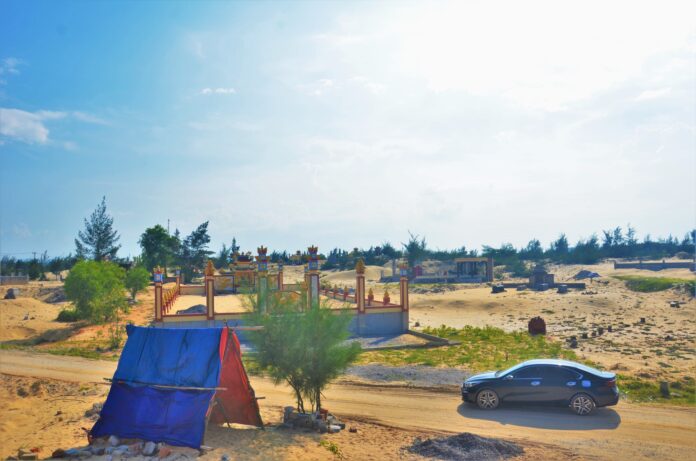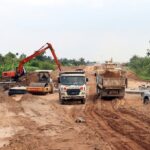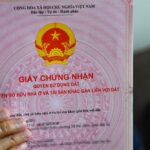The Race for Land: A Threat to Vietnam’s Coastal Mangrove Forests
The coastal mangrove forests in Quang Tho ward, Ba Don town, Quang Binh province – often referred to as the “green shield” protecting the locals – are facing a serious invasion.
The Land Grab
Without the need for advertisements or real estate agents, locals have quietly transformed these coastal mangrove groves into private family cemeteries.
Posing as someone seeking a burial site for a relative, we approached several households in Tho Don neighborhood. Without hesitation, a middle-aged man pointed to the thinning casuarina grove: “If you want to build a tomb, just go there and choose a spot. Stretch a wire, enclose the area, and you’re done; no need for anyone’s permission. If you don’t do it now, the beautiful spots will be gone soon!”
Indeed, according to the observations of the NLD reporter, within a radius of just over 1 km around the casuarina forest – about 300 m from the coast of Quang Tho – dozens of cemeteries were built side by side. Some were already completed with glossy granite, while others were still in progress, with only concrete foundations, iron frames, or stakes to “mark their territory.” Many patches of forest land were cleared, and casuarina trees as thick as calves were cut down, their stumps still oozing resin, their leaves not yet withered.

Large areas of casuarina forests in Quang Tho ward illegally cleared for cemetery construction.
“Since Tet, the land occupation for cemetery construction has become a ‘movement,’ and I’ve counted almost 50 cemeteries popping up in the forest. Here, everyone does as they please; those with money build large tombs, and those with less money build smaller ones. Yet, no one intervenes,” asserted Mr. D.H.T., an 80-year-old resident of Tho Don.
No longer an isolated act, the trend of “grabbing land for burial” is spreading and happening openly in Tho Don. According to our observations, locals brought excavators and trucks into the forest to level the ground and gather materials, while illegally extracting sand from the surrounding areas for construction. In the midst of the white sand, littered with tire tracks, new cemetery areas emerged haphazardly among the dying casuarinas.
In many places, people stretched wires and drove stakes to mark their claimed land. Some of the new cemeteries were elaborately constructed, engraved with family names and dates.
Local Authorities: Between Difficulty and Accountability
At an unfinished cemetery in the middle of the casuarina forest, we encountered a group of about ten workers taking a break in the shade. They were local laborers hired daily to build the cemetery. When asked if they were concerned about being penalized by the authorities for illegal construction on protected forest land, one of the workers nonchalantly replied, “We just do what the owner tells us to do, as long as we get paid.”
In this area, land leveling and tomb construction occur almost daily, leading some to liken it to a “ghost city” in the making. As soon as a flat patch of sandy land is spotted, someone immediately ropes it off and stakes their claim, sometimes occupying tens or even hundreds of square meters. “These casuarinas were planted about 30 years ago, but now their roots are being dug up, and excavators are razing them to clear the land. Everyone is rushing to do it now, fearing that the government will tighten control later,” shared a worker.
The encroachment of the coastal casuarina forests in Quang Tho ward for illegal cemetery construction is becoming increasingly complex. Locals suspect illegal land sales, lot divisions, and the use of fake tombs to occupy land, arguing that this situation would not have persisted if not for the local authorities’ lax management.
Ironically, the area of destroyed forest lies along the Vo Nguyen Giap tourist route, severely disrupting the ecological landscape and replacing the windbreak function of the forests with cemeteries.
Regarding this issue, statements from local authorities have been contradictory. Mr. Nguyen Van Huu, Chairman of Quang Tho Ward People’s Committee, acknowledged the situation but claimed that handling it would be “very difficult” and declined to comment on the ward’s responsibility. (?!)
Meanwhile, Mr. Nguyen Van Ninh, Vice Chairman of Ba Don Town People’s Committee, asserted that the primary cause was the Quang Tho ward authorities’ negligence in management. Mr. Ninh informed that the town had planned a centralized cemetery and would direct the preservation of the current state, preventing further encroachments. Without firm measures, the prospect of this entire forest turning into a “coastal cemetery” would have detrimental consequences for the locality’s ecological tourism planning.
Breaching the Master Plan
According to the People’s Committee of Ba Don town, the unauthorized occupation of coastal protective forests for cemetery construction not only threatens the loss of forests but also disrupts the master plan, impacting the direction of developing coastal ecological tourism, which is considered the town’s economic focus in the future.
The Ministry of Agriculture and Environment: Digitization of Land Data to Accelerate Public Investment Disbursement
“Speaking at the 2025 Conference on Promoting Investment Growth Motivation, Minister of Agriculture and Environment, Du Duc Duy, highlighted the successful efforts of several localities in digitizing their land database. Specifically, localities such as Ha Nam, Bac Ninh, Binh Duong, Da Nang, and Ba Ria-Vung Tau have efficiently digitized their land records. As a result, these localities have experienced smoother land clearance processes, as every plot of land is now accounted for digitally. This digitization has led to a higher rate of investment disbursement compared to the national average, showcasing the benefits of embracing digital transformation.”
Proposed Authority to Grant First-Time Red Book Certification to Commune-Level Government
The Ministry of Agriculture and Environment proposes to grant People’s Committees at the communal level the authority to issue land-use right certificates (red books) for the first time, bypassing the previous procedure of granting such power to the district level.





















